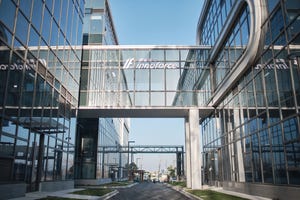
M&A has long been rife among contract development and manufacturing organizations (CDMOs), but the general trend has been of consolidation in a fragmented space as companies fill holes in their outsourcing offerings.
Thermo Fisher’s $7.2 billion Patheon buy in 2017 and Danaher Corporation’s $9.6 billion Aldevron takeover in 2021 demonstrate the money that service firms have been prepared to spend on bringing contract manufacturing into its biopharma offerings, but Novo Holdings’s $16.5 billion bid for Catalent on Monday came as somewhat of a surprise.
The deal was not driven by the need to dive into the third-party manufacturing space, nor to bolt-on outsourcing capabilities. Instead, the transaction revolves around securing capacity for Wegovy (semaglutide), the weight loss blockbuster set to keep Novo Nordisk’s pockets enormously filled for at least the next decade. Thus, the acquisition includes an $11 billion divestment of three of Catalent’s fill/finish facilities, set to be incorporated into Novo Nordisk’s glucagon-like peptide-1 (GLP-1) inhouse production network. (Spoiler alert, Novo Holdings is the largest shareholder in the Danish drugmaker.)
The repercussions in the blooming GLP-1 space will be huge – Novo’s rival Eli Lilly, which has also named Catalent as being part of its own diabetes and obesity network, spoke recently of its own concern with this deal – but the knock-on to the wider CDMO industry and in particular the cell and gene therapy (CGT) sector could be even bigger.
“While the takeover of Catalent by Novo Holdings is driven by Wegovy manufacturing, there will be a significant ripple effect into cell and gene therapy,” Anthony Davies, founder & CEO at CGT-focused consultancy firm Dark Horse Consulting, tells BioProcess Insider. “This is probably the biggest transaction of cell and gene capacity ever – ironic it was caused by something else.”
The firm entered the gene therapy space through the acquisition of CDMO Paragon Bioservices in May 2019 for $1.2 billion. Over nearly five years, Catalent has built its CGT network up through both internal investments and further bolt-ons.
“Catalent has three gene therapy capable plants (all in Maryland, most significantly their ‘Harmans’ site near BWI airport, formerly Paragon), three cell therapy capable plants (Princeton NJ, formerly Erytech, Gosselies Belgium (formerly Masthercell) and Dusseldorf Germany, formerly Rheincell), and one plasmid capable plant (Gosselies again),” says Davies.
Catalent is one of the dominant CDMOs in a field that has long been dependent on outsourced manufacturing. The firm supports at least two commercial gene therapies – Novartis’ Zolgensma (onasemnogene abeparvovec), and Sarepta’s Elevidys (delandistrogene moxeparvovec) – and many other candidates in development. Add alleged shortages of viral vector capacity, the whole industry is cagily awaiting to hear Novo Holdings’ plans for Catalent’s CGT network.
Novo Holdings has already demonstrated its willingness to sell off parts of Catalent business (the three fill/finish plants) and as Davies notes, much of the CGT capability was acquired inorganically: “What was bought can be sold!”
Furthermore, Catalent’s regulatory record in CGT production has not been squeaky clean. “Harmans has picked up two 483s from the US FDA in the last few years,” says Davies, and “multiple other Catalent sites have picked up more 483s.” With the caveat that the burgeoning CGT space is complex and regulatory concerns often remain grey areas, he adds that in his professional opinion Catalent has picked up more FDA wrist-slaps than most.
If Catalent’s CGT network proves to be too much of a headache for Novo, it could well be next on the divestment agenda. Then, of course, the question moves on to whether the new buyer(s) – whether a third-party, Big Pharma, or [insert leftfield acquirer here] – will continue the ripple or cause a full-out tsunami across the advanced therapy space.
About the Author
You May Also Like

schedl_b_and_w.jpg?width=100&auto=webp&quality=80&disable=upscale)
schedl_b_and_w.jpg?width=400&auto=webp&quality=80&disable=upscale)






